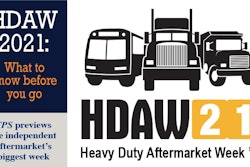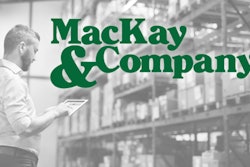Depending on your personality, business planning is likely a favorite or least favorite aspect of your job. Some people love the challenge of evaluating an operation and charting its path to the future. Others aren’t always so captivated by the long game; they’d rather be out in the market today — enjoying the now.
Yet no matter where you fall in the spectrum of business planning fandom, one thing is for sure: After the events of the past year, projecting what to expect for your business in 2021 is a tall task.
It has been at least a decade since the dealer and aftermarket channels entered a new year fraught with this much uncertainty.
For those who battled the Great Recession and won, I’m sure there are aspects about business planning you learned then that you can fall back on this year. For those who weren’t yet in the market or had not yet ascended to positions of authority, setting your goals for the year ahead is going to be hard.
Here are a few things to consider before you finalize your business plan and notify your team of their expectations for the year ahead.
How did your business respond to 2020?
This is obvious, I know, but I’m not only suggesting you evaluate your 2020 results against your projections. How were you doing pre-COVID-19? How about after? Did your business fluctuate month over month? What about shutdowns? How many occurred in your area of operation and did they correspond to any business lulls?
The economy has bounced back admirably since last March, and that includes many businesses in our industry. But the external factors that drove sudden changes in 2020 still exist. You need to consider how you were impacted by them last year to know how you can withstand them if they reappear in the months ahead.
Where do you stand nationally?
There’s also the matter of grading your business against the industry at large. Equipment and aftermarket parts sales were down nationally (in the U.S. and Canada) in 2020 compared to 2019 so if your business closed December in the red you’re not alone. But you should still check yourself against the market. If your aftermarket sales slipped 15 percent last year — that’s almost 6 percent higher than the national average. What caused that and how can you fix it?
Same question on the other side. If you were only down 2 percent, or maybe up 2 percent, why? What factors led to your success and can you replicate them.
Where do you stand locally?
Has your local economy rebounded from last spring’s sudden cliff? What segments of local industry are you most connected to and how are they projected to perform in the year ahead? These are questions you have to be able to answer.
During presentations Monday and Tuesday at Heavy Duty Aftermarket Dialogue and Heavy Duty Aftermarket Week, MacKay & Company’s John Blodgett mentioned consumption is the segment of the national economy that has been fastest in recovering from COVID.
Trade on the other hand has been hammered and continues to struggle. How connected are you to the movement of retail goods? If you’re near a border or port, can you shift your business to prioritize local operations until trade returns to historical levels?
What about COVID-19 in your area?
There’s also the matter of actual COVID defense. What is the infection rate in your state or county? What is the trend? How many vaccines have reached your community and how quickly will they be administered? These are questions business owners have never had to ask before but must consider in 2021.
Rural communities are likely to receive fewer doses than urban centers but still may vaccinate their populations faster because of reduced demand. Recalling the shutdown question above, how restrictive is your state and local government likely to be to combat the virus until herd immunity is reached? If you have multiple locations, how are different government responses likely to impact the profitability of your facilities?
“Keep an eye on your local news and what’s happening in your marketplace,” says Blodgett. “That’s where you have to pay attention.”
Finally, how have you evolved?
Workplace sanitization isn’t the only way your business should have changed over this last year. Have you increased your delivery capabilities, invested in e-commerce and digital marketing and capitalized on virtual education to keep your workforce informed?
Customer expectations and purchasing trends have changed dramatically since January 2020. Maybe your customers let you off the hook for being slow to evolve last spring. They are unlikely to be as forgiving a year later.
Blodgett says MacKay & Company anticipates the U.S. aftermarket to be up by more than 11 percent this year (12 percent in Canada). Equipment sales projections are strong as well. Business is trending upward. Your year-over-year projections for 2021 should be positive. But if you want accurate, detailed projections, you’re going to have to do the research.










